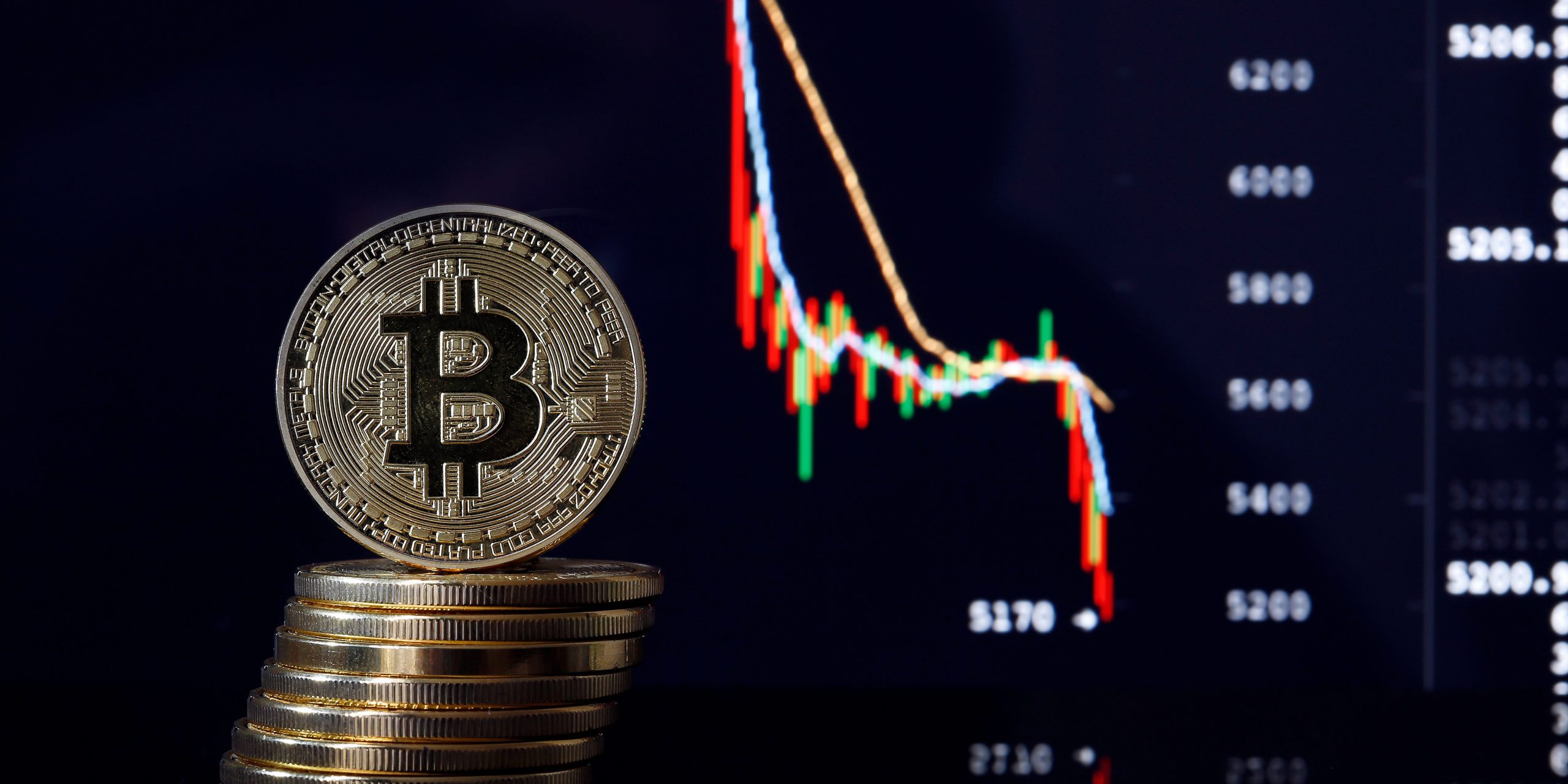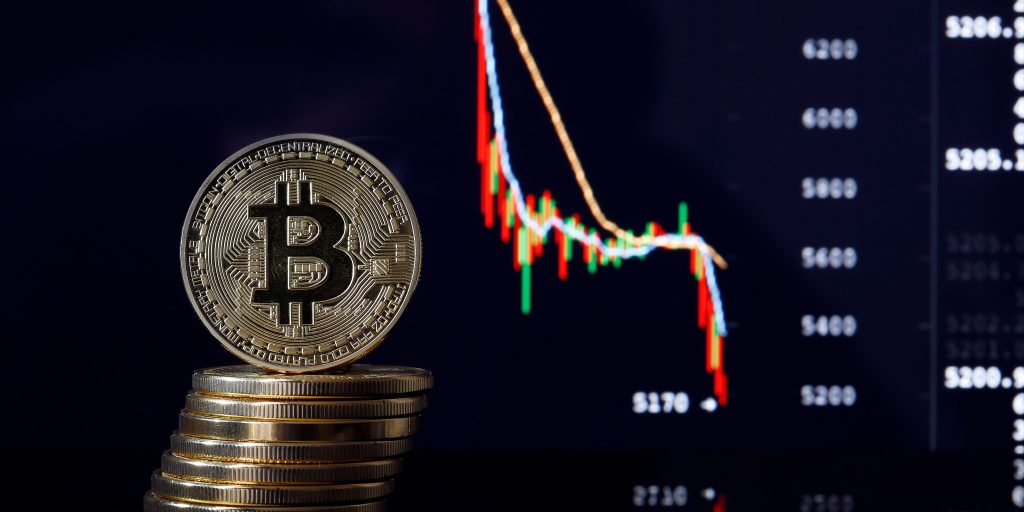
- Bitcoin could drop to $10,000 by 2023 as the Fed normalizes interest rate policy, according to Stifel.
- The firm outlined three macro factors that have a big impact on the price of bitcoin.
- "We see bitcoin in a broad trading range bounded by year-to-date intra-day levels with greater downside risk," Stifel said.
Bitcoin could plummet 76% from current levels to $10,000 by 2023 as the cryptocurrency faces three macro headwinds that have an influence on its price, according to a note from Stifel's Barry Bannister.
Bannister highlighted global money supply, the 10-Year US Treasury yield, and the equity risk premium of the S&P 500 that have influence over the price of bitcoin. Planned tightening by the Federal Reserve in the form of interest rate hikes and a reduction in its balance sheet could have a negative impact on the price of bitcoin, according to Bannister.
"In 2022, we see bitcoin in a broad trading range bounded by year-to-date intra-day levels with greater downside risk in 2023 if the Fed continues to normalize policy in a 'standard' two-year tightening cycle," Bannister explained.
Here are the three macro factors Bannister is monitoring to gauge what may be in store for the price of bitcoin going forward.
1. "Bitcoin as a function of global money supply."
"Both the S&P 500 and bitcoin move with global money translated into dollar, bitcoin just moves more... If the dollar strengthens then global M2 money growth slows, which could tighten US financial conditions. If US financial conditions tighten, a high-powered speculative asset like bitcoin would likely fall significantly," Bannister said.
2. "Bitcoin as a function of the real 10-year yield, gold price and oil price."
"If 10-year real (after-inflation) TIPS US Treasury yield... rises due to Fed tightening... it restrains bitcoin upside, and if the rising 10Y TIPS yield pulls gold lower that also pressures bitcoin. If bitcoin divided by gold falls to the low end of its range (Fed tightens) bitcoin could drop to $10,000 by 2023," Bannister said.
3. "Bitcoin as a function of how far the Fed can go before cracking stocks."
"We believe the 10Y real yield rises no more than 80 basis points in 2022, the first year of a 2-year Fed tightening cycle, but then the S&P 500 (and bitcoin) break down in 2023 as Fed keeps going; this is part of 'equity risk premium.' Bitcoin likes a lower equity risk premium, so watch if Fed exit raises equity risk premium (bearish bitcoin) or lowers equity risk premium (bullish)," Bannister said.
The world's largest cryptocurrency by market value is already down 39% from its record November high, and a decline to Bannister's $10,000 target would represent a total drawdown of as much as 86%.
Such a decline would not be out of the ordinary for bitcoin, as the extremely volatile and speculative asset plunged 83% from its prior high of about $20,000 in 2018.
